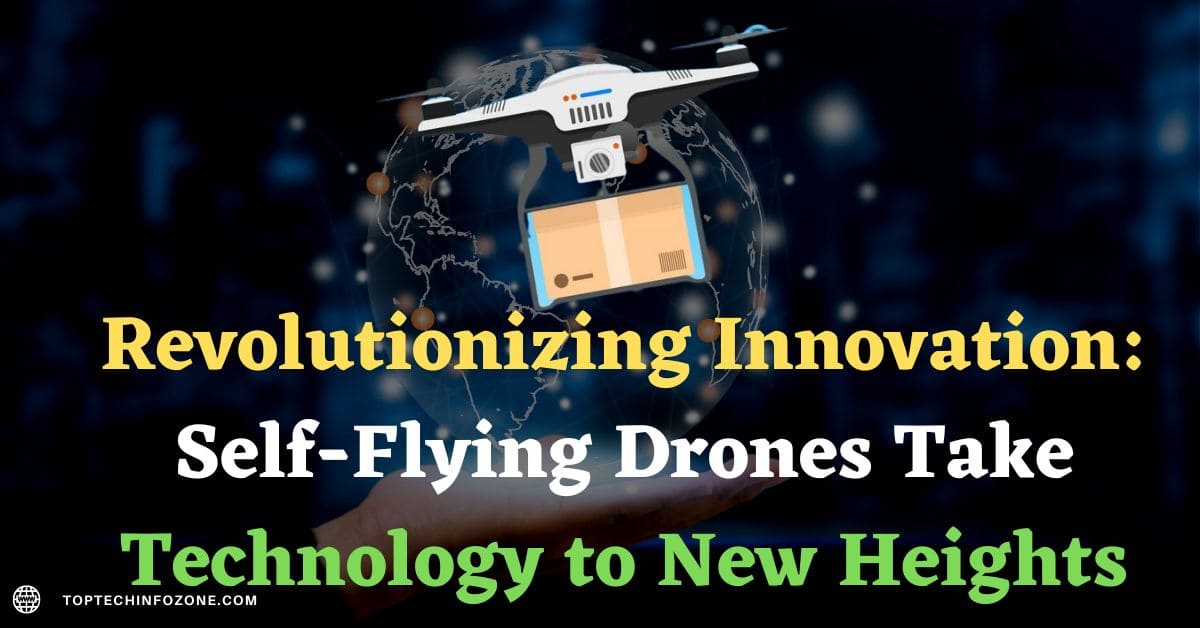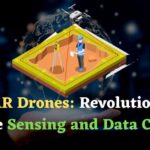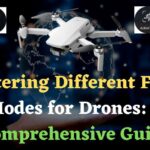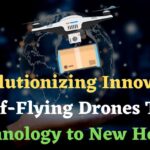In this blog post, we introduce the next-level technology of self-flying drones. Self-Flying drones are equipped with advanced sensors and AI technology, allowing them to fly autonomously without the need for a human pilot. The self-flying drones are not only easy to use but also offer a safe and efficient way to capture stunning aerial footage. Join us as we explore the exciting world of self-flying drones and experience the future of aerial technology.
Introduction
The ascent of unmanned aerial vehicles (UAVs) has unlocked a myriad of new prospects. In recent times, drones have gained popularity among enthusiasts and experts alike. Nonetheless, there has been a contemporary progress in drone technology that is propelling the field to greater heights: autonomous drones. These drones possess the capacity to function without the necessity of human interference, which makes them a perfect fit for a broad range of applications.
What is a Self-Flying Drone?
A self-flying drone is an unmanned aerial vehicle (UAV) that can fly without the need for human input.
It is equipped with a range of sensors, including cameras, GPS, accelerometers, and gyroscopes, which allow it to navigate and fly autonomously.
Self-flying drones use sophisticated algorithms to interpret data from these sensors and make decisions about where to fly and how to avoid obstacles..
How Do Self-Flying Drones Work?
Self-flying drones use a variety of technologies to navigate and make decisions. These technologies include GPS, obstacle detection sensors, and computer vision. These sensors allow the drone to understand its environment and make decisions on the fly.
For example, if the drone detects an obstacle in its path, it will automatically adjust its flight path to avoid the obstacle.
Self-flying drones use a combination of hardware and software to achieve autonomous flight. The hardware includes the sensors mentioned above, as well as motors and propellers that allow the drone to move through the air.
The software includes a range of algorithms that process data from the sensors and make decisions about how to fly the drone.
One of the most critical software components of a self-flying drone is the flight controller. The flight controller is the “brain” of the drone, and it controls the motors and propellers to achieve flight. It also processes data from the sensors to adjust the drone’s position and orientation in real-time.
No drone pilots are required for self-flying drones.
Applications of Self-Flying Drones
Self-flying drones have a wide range of applications, from commercial to military. Here are just a few examples:
Delivery
Self-flying drones could revolutionize the delivery industry. Companies like Amazon are already testing drone delivery systems, but self-flying drones could take this to the next level. Imagine being able to order something online and have it delivered to your doorstep within hours, all without any human intervention.
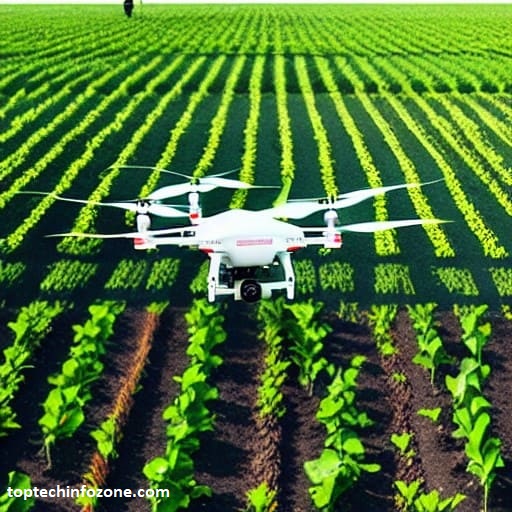
Agriculture
Self-flying drones can be used in agriculture to monitor crops and gather data. These drones can be programmed to fly over fields and collect data on crop health, soil moisture, and more. This data can then be used to make informed decisions about irrigation, fertilization, and other agricultural practices.
Search and Rescue
Self-flying drones could also be used in search and rescue operations. These drones could be programmed to search for missing persons in remote or dangerous areas. They could also be used to survey disaster areas and provide real-time data to first responders.
Surveillance
Self-flying drones are also ideal for surveillance. They can be used to monitor large areas, such as borders or industrial facilities. These drones can be programmed to fly a specific path and gather data on anything they see. This data can then be used to identify potential security threats or other issues.
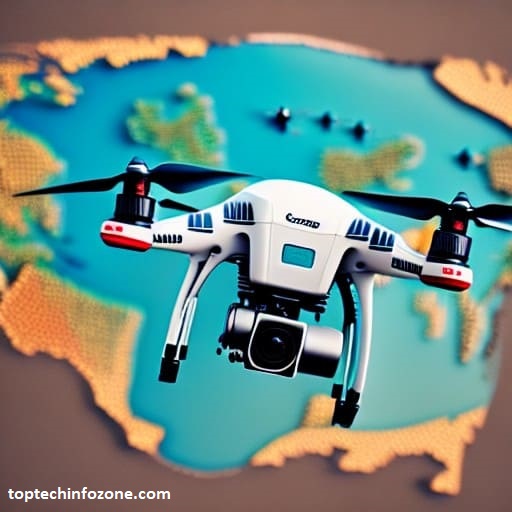
Aerial Photography and Videography
Self-flying drones are becoming increasingly popular among photographers and videographers who want to capture stunning aerial footage. They can fly autonomously, allowing the camera operator to focus on capturing the perfect shot.
Inspection and Monitoring
Self-flying drones can be used to inspect and monitor infrastructure, such as bridges, pipelines, and power lines. They can fly autonomously along predetermined routes, capturing high-resolution images and video that can be analyzed for damage or wear and tear.
Mapping and Surveying
Self-flying drones can be used for mapping and surveying purposes. They can fly over large areas and capture high-resolution images and data, which can be used to create 3D maps and models.
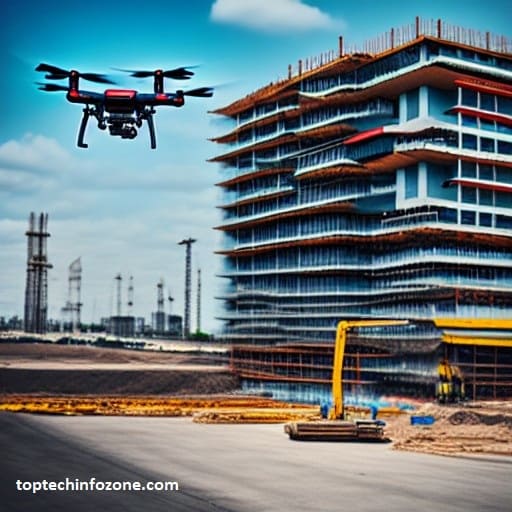
Construction and Building Inspection
Self-flying drones can also be used in the construction industry for building inspection and progress monitoring. They can fly over construction sites and capture images and data that can be used to track progress, identify potential issues, and improve safety.
Environmental Monitoring
Self-flying drones can be equipped with a range of sensors to monitor the environment, including air and water quality, wildlife populations, and natural resources. This data can be used to inform conservation efforts and help prevent environmental disasters.
Delivery Services
Self-flying drones can be used for delivery services, such as delivering packages and medical supplies to remote or hard-to-reach locations. This can help improve delivery times and reduce transportation costs.

Security
Self-flying drones can be used for security purposes, such as monitoring borders, public spaces, and critical infrastructure. They can be equipped with high-resolution cameras and other sensors to provide real-time situational awareness.
Overall, self-flying drones have the potential to revolutionize a wide range of industries and provide a safer, more efficient way to complete tasks that would be difficult or dangerous for humans.
Media and Entertainment
Self-flying drones can be used in the media and entertainment industry to capture stunning aerial footage for movies, TV shows, and other productions. They can also be used to provide live streaming of sporting events, concerts, and other outdoor activities.
Personal Transportation
Self-flying drones have the potential to revolutionize personal transportation, allowing individuals to travel quickly and efficiently over short distances without the need for roads or infrastructure. While this technology is still in its infancy, companies like Uber and Airbus are already exploring the potential for self-flying taxis and other forms of aerial transportation.
Overall, self-flying drones have the potential to transform a wide range of industries and provide innovative solutions to a variety of challenges. As technology continues to evolve and improve, we can expect to see even more exciting uses for self-flying drones in the future.
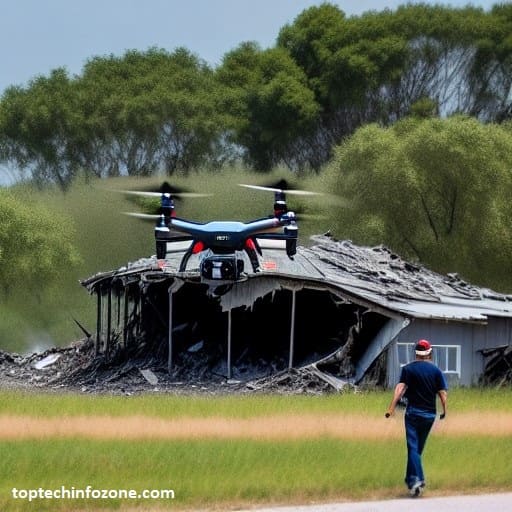
Disaster Response
Self-flying drones can be used in disaster response efforts to assess damage, identify potential hazards, and search for survivors. Equipped with high-resolution cameras and other sensors, they can provide real-time situational awareness to first responders and aid in the coordination of rescue and recovery efforts.
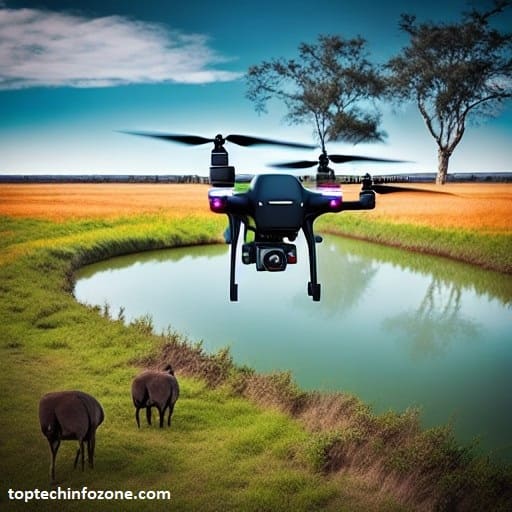
Wildlife Conservation
Self-flying drones can be used in wildlife conservation efforts to monitor and protect endangered species. They can be equipped with cameras and other sensors to track animal populations and detect illegal hunting or poaching activities. This data can then be used to inform conservation strategies and protect vulnerable ecosystems.
Education and Research
Self-flying drones can be used in education and research settings to collect data and provide students and researchers with a unique perspective on a variety of subjects. They can be used to study wildlife behaviour, geological formations, and historical sites, among other things. They can also be used to teach students about science, technology, engineering, and math (STEM) subjects.
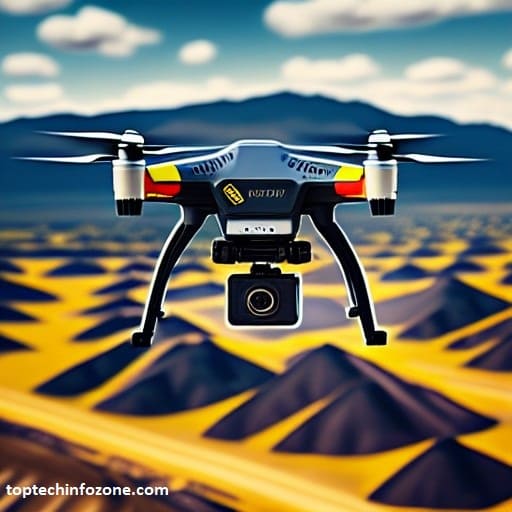
Mining and Exploration
Self-flying drones can be used in mining and exploration efforts to survey remote areas and assess potential mineral deposits. They can be equipped with specialized cameras and other sensors to identify mineral deposits and analyze geological formations. This can help mining companies identify new sources of valuable resources and reduce the need for costly and dangerous manual exploration.
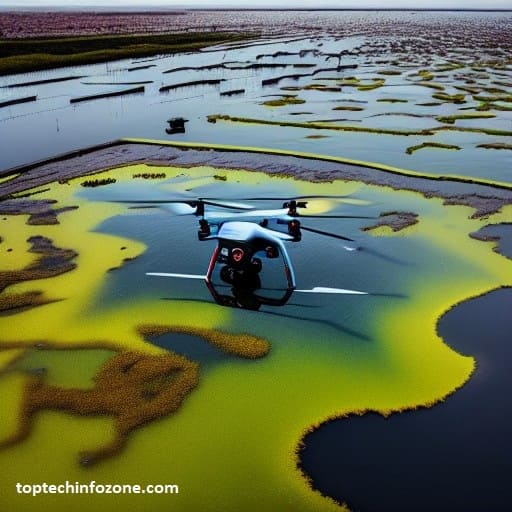
Disaster Prevention and Mitigation
Self-flying drones can also be used to prevent and mitigate disasters by providing early warning systems and monitoring critical infrastructure. They can be used to detect potential hazards such as landslides, floods, and wildfires, and provide real-time data to help prevent or minimize damage.
Advantages of Self-Flying Drones
There are several advantages to using self-flying drones:
Efficiency
Self-flying drones can operate 24/7 without the need for breaks or rest. This makes them ideal for applications where efficiency is key.
Safety
Self-flying drones are safer than manned aircraft. Since they are unmanned, there is no risk of injury or death to a human pilot.
Cost-Effective
Self-flying drones are also more cost-effective than manned aircraft. They require less maintenance and do not require a human operator.
Challenges of Self-Flying Drones
While self-flying drones offer many advantages, there are also several challenges that need to be addressed:
Regulations
Regulations surrounding self-flying drones are still evolving. There are concerns about privacy, safety, and security that need to be addressed.
Technical Issues
There are also technical issues that need to be addressed. Self-flying drones require complex software and hardware, and there is always the risk of technical failure.
| Image | Product | Feature | Price |
|---|---|---|---|
|
TOP Pick
 |
DJI FPV Combo – First-Person View Drone UAV Quadcopter with 4K Camera, S Flight Mode, Super-Wide 150° FOV, HD Low-Latency Transmission, Emergency Brake and Hover, Gray
|
Immersive Flight Experience High Quality 4K Footage Intuitive Motion Controller Super-Wide Angle View One-Click Stop Limitless Control Dynamic Flying | Buy Now |
|
Trending
 |
DJI FPV Combo w/ Fly More Kit (2 more batteries & 1 charging hub) – First-Person View Drone Quadcopter UAV w/ 4K Camera, Flight Mode, Super-Wide 150° FOV, HD Low-Latency Transmission, E-Brake & Hover
|
Immersive Flight Experience (DJI FPV Goggles V2) High Quality 4K Footage Intuitive Motion Controller (DJI Motion Controller) Super-Wide Angle View (150° FOV ) One-Click Stop (Emergency Break and Hover ) Limitless Control (M Mode ) Dynamic Flying (S Mode ) | Buy Now |
|
Trending
 |
DJI FPV Combo with Motion Controller – First-Person View Drone Quadcopter UAV with 4K Camera, S Flight Mode, Super-Wide 150° FOV, HD Low-Latency Transmission, Emergency Brake and Hover, Gray
|
Immersive Flight Experience (DJI FPV Goggles V2) High Quality 4K Footage Intuitive Motion Controller (DJI Motion Controller) Super-Wide Angle View (150° FOV ) One-Click Stop (Emergency Break and Hover ) Limitless Control (M Mode ) Dynamic Flying (S Mode ) | Buy Now |
Conclusion
Self-flying drones are the future of unmanned aerial vehicles. They offer a wide range of applications and advantages, but there are also challenges that need to be addressed. As technology continues to evolve. As technology continues to evolve, we can expect to see even more advanced self-flying drones in the future. These drones will be able to perform even more complex tasks and operate in a wider range of environments. However, it’s important to address the challenges that come with this technology to ensure its safe and responsible use.
Frequently Asked Questions (FAQs):
Self-flying drones are different from traditional drones in that they do not require a human operator. They are capable of operating on their own using a variety of sensors and technologies.
Self-flying drones offer several advantages, including efficiency, safety, and cost-effectiveness. They can operate 24/7, are safer than manned aircraft, and are more cost-effective to operate.
The challenges of using self-flying drones include regulations, privacy concerns, and technical issues. As with any new technology, it’s important to address these challenges to ensure safe and responsible use.
As technology continues to evolve, we can expect to see even more advanced self-flying drones in the future. These drones will be able to perform even more complex tasks and operate in a wider range of environments.
Related Posts:
- LiDAR Drones: Revolutionizing Remote Sensing and Data Collection (2023)
- The Revolutionary Selfly Drone: Changing the Game of Personal Photography (2023)
- Mastering Different Flight Modes for Drones: A Comprehensive Guide (2023)
- Revolutionizing Innovation: Self-Flying Drones Take Technology to New Heights (2023)
